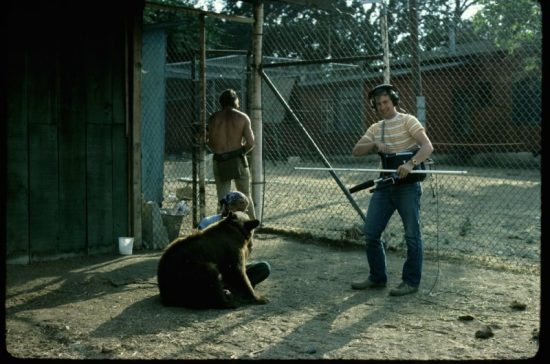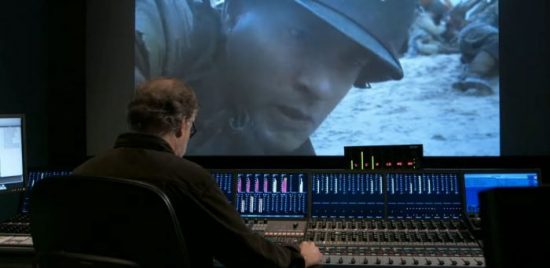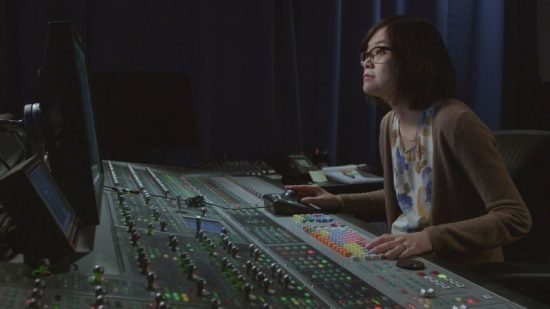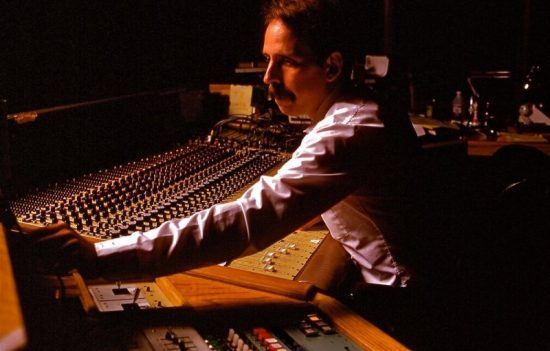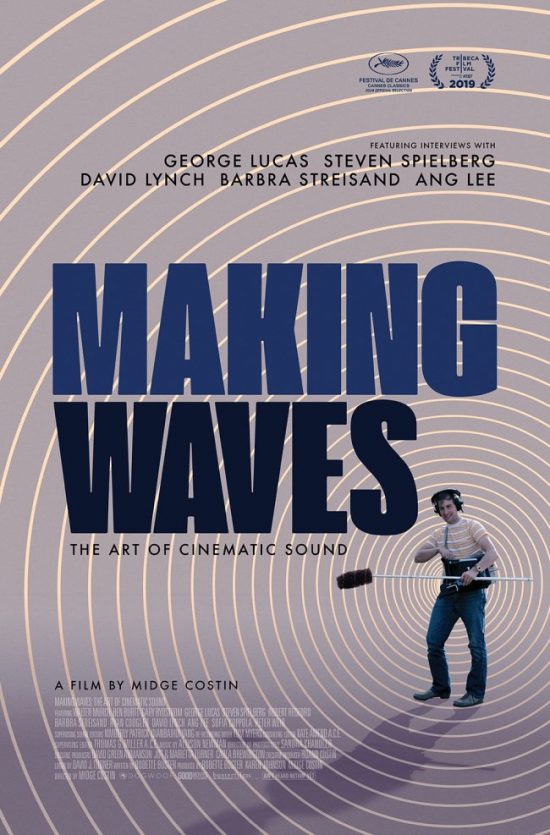Midge Costin talks Making Waves: The Art of Cinematic Sound
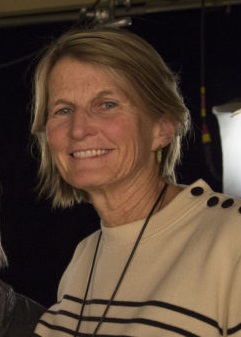 Midge Costin was the sound editor on a swathe of films that define 90s action, like Crimson Tide, Days of Thunder, Armageddon, The Rock, Con-Air and Broken Arrow, and is currently the professor in ‘Art of Dialogue and Sound Editing’ at USC. She has now made her directorial debut with documentary Making Waves: The Art of Cinematic Sound (read my review) , which is released in UK cinemas on the 1st of November.
Midge Costin was the sound editor on a swathe of films that define 90s action, like Crimson Tide, Days of Thunder, Armageddon, The Rock, Con-Air and Broken Arrow, and is currently the professor in ‘Art of Dialogue and Sound Editing’ at USC. She has now made her directorial debut with documentary Making Waves: The Art of Cinematic Sound (read my review) , which is released in UK cinemas on the 1st of November.
Making Waves: The Art of Cinematic Sound reveals the hidden power of sound in cinema… and our lives. Through film clips, interviews and archival footage an enlightening and a nostalgic look at many of Hollywood’s biggest box office hits the film captures the history, impact and unique creative process of this overlooked art form and the artists behind it.
Filled with insights from legendary directors including George Lucas, Steven Spielberg, Barbra Streisand, Robert Redford, David Lynch, Ang Lee, Sofia Coppola and Ryan Coogler, who share revealing stories about the award-winning work their sound collaborators help to create.
In Making Waves, we witness the wild creativity of some of the industry’s most-respected key sound designers including Oscar winners Walter Murch (Apocalypse Now), Ben Burtt (Star Wars), Gary Rydstrom (Saving Private Ryan) and Lora Hirschberg (Inception); and Oscar-nominees Cece Hall (Top Gun), Anna Behlmer (Braveheart) and Bobbi Banks (Selma) who, in pursuing their art and desire to push the medium, are the very people who will go down in the history of cinema as developing sound into the immersive storytelling force it is today.
Midge recently spoke to us about the making of her documentary, as well as spilling beans on working with Michael Bay, John Woo and Tony Scott, and the making of Halloween classic Hocus Pocus.
Hiya Midge. I’m Alan from Live for Films. Thank you for taking the time to answer some questions from us about your wonderful film today. We loved Making Waves. It’s a fantastic documentary that will change the way everyone who sees it watches films from then on. Have you been happy with the film’s reception so far?
Hi Alan! I have been over-the-moon happy with how this film is being received! It’s been sold out at film festivals all over the world. Audience members of all ages and backgrounds come up bubbling over with enthusiasm and often in tears. In Bogota Colombia we won the Audience Award for the overall Bogota Independent film festival! I got rushed for autographs in Korea and had young women come up to me crying at Cannes. It’s blowing me away how much people are relating to it and getting so much out of it. It’s a dream come true!
The talent you have managed to get involved in the film is jaw-dropping. Can you please tell us about how you managed to wrangle together such incredible interviewees and what that process was like?
I mostly went through the sound designers to get the directors. These are all filmmakers who love sound and feel their sound designers are equal collaborators to the director of photography or production designers or composer. George Lucas and Steven Spielberg know me through USC. And I know a lot of the sound people from working in the industry. So everyone was just a few degrees of separation away.
How did you approach the structure of Making Waves? Did you already have the framework set in stone, or was it more of a case of having the bones of it first and then once the interviews were done then sculpting where you’re going from the material?
The editing was a monumental task and really tricky! My producing partners Bobette Buster and Karen Johnson and I had a meeting with our editor David J. Turner to get an overall structure of what we thought the film should be. That took us 3-5 days back in 2013. Then we started shooting but we weren’t exactly sure what our structure was as we were getting the history from the people who were and presently are making it! We discovered that there wasn’t very much documented from the first generation of cinema sound people so I was determined to capture as much as we could for this second generation of sound people. We recorded 90 interviews – some of those were verité shoots of people working.
Then we would put scenes together of directors and their sound people. That played a big factor in who we used. But there was this whole history in the 70s which we needed to capture with Francis Ford Coppola and George Lucas and Walter Murch. That’s where the “Making Waves” kind of comes from – the need to get out of Hollywood to do things differently and on their own terms. And that meant putting more emphasis and more of the budget – time and money into sound.
A really tricky part was trying to figure out how to get the section where we show the roles of sound in production and post-production incorporated into the film. I really wanted to capture and explain this not just in a technical manner but including the artistry and the humanity. Many of the people in the movie I worked side-by-side with and I wanted to capture the collaboration and the camaraderie. So in the last two years, we brought on my USC colleague and doc filmmaker and editor Thomas G. Miller to help hammer out the structure. He helped us plant the “Circle of Talent” idea throughout the film – that graphic that shows the types of sound jobs and how they work together.
Did you run the interviews yourself, and if so what was your approach?
Yes, I asked the questions. My Director of Photography was my dear friend who I met in film school and who shot my thesis film over 30 years ago – documentary DP extraordinaire Sandra Chandler. Bobette Buster would ask questions at the end coming from an outsiders point of view which could sometimes give us something from a different angle. I researched everyone and watched their films. I also looked at as many interviews online as I could find. Having spent so much time in the industry as a sound editor myself and having taught young filmmakers at USC for as many years, I could ask what I thought would shed light on the subject both historically and personally. Besides the artistry itself, I really did want to get in questions about gender disparity and about family life with the long hours that are required and how people managed.
Did you enjoy making the film? Were any parts of the process particularly problematic or more rewarding than you had expected?
I LOVED making this film. Interviewing such big-name directors was fun and nerve-wracking. I had to do my homework. It was such an honour to talk with them – I particularly liked talking with David Lynch, Barbra Streisand, Ang Lee, Peter Weir… I guess I could name them all! Haha! When I was talking with George Lucas I had the feeling he was reliving that fact that maybe Star Wars wouldn’t do well – he was biting his lip at that point. But spending hours with Walter Murch and Ben Burtt and Gary Rydstrom was key and incredibly informative. Then women like Pat Jackson and Lora Hirschberg and Anna Behlmer and Teri Dorman was great as well. These are historic figures in the history of cinema sound.
But I also LOVED the editing process – working with editor David Turner and telling him what it was like to be working with these people. I felt like he took Bobette and Karen and my “paper cuts” and turned them into something much more poetic and cinematic! He’s brilliant!
And then when it came to the music process, our composure Allyson Newman was amazing. This was something I wasn’t as experienced at. I loved sitting with Allyson and talking out ideas and emotions – where the starts and stops should be and the themes. When we were recording in the studio with a 19 piece orchestra I went inside the studio to be in the room with the instruments and players. Just as I walked in and they started playing the emotional ending music, a shot of my close friends came up on the screen – Bobbi Banks and a bunch of my close friends I worked closely with – and the emotion in the music just made me cry – in front of the ten violins of all things! Embarrassing!
Raising money was near impossible. Everyone would say that sound mattered to them but just like the budget and timeline on a film – they didn’t put the money where their mouths were. So we got donations from people and if it wasn’t for our Executive Producers, particularly my sister, RoAnn Costin, we would still be working on it today or maybe it just would never have been finished. We did a very successful Kickstarter campaign which raised $135,000 but our budget was over a million.
And the Fair Use process that was necessary and oh so helpful but really arduous. That’s where my producing partner Karen Johnson really was essential. She had done a feature doc about stuntwomen Double Dare that used clips and she was trained as a lawyer so that was super helpful. We had a spreadsheet with over a thousand entries – photos from archives which we paid for – and clips which we needed to use Fair Use or the cost would have been prohibitive.
What will your next film be you think?
Well, we have lots of amazing material to mine for more on cinema sound. I’m working hard to get this film out in front o audiences and loving that. I have a few ideas rolling around in my head. Too early to put them out coherently.
Many of your subjects talk about the first time that they became aware of what film sound could do. What was your own experience of this? Did you also have an aural epiphany at some point?
I came out of film school thinking sound would be the LAST thing I would get into. It nearly gave me panic attacks when I had to work on it because I wasn’t connecting sound to story and character. I came out of school wanting to edit picture and took a few apprentice and assistant editing jobs. When a film school friend who had become a sound editor called to ask me to edit the sound effects on a 16mm movie that none of the union guys would touch, I lowered myself and took the job because I needed the money. That’s when I began thinking of how to use sound to help with mood and tone and character and plot points. And one sound job led to another and I was hooked pretty early on. My first union job was on Days of Thunder where I was responsible for cutting the “bad guy’s” car – anyone racing against Tom Cruise. Here we were doing 5.1 surround sound and it was fun and exciting!
You were the sound editor on films that define 90s action like Crimson Tide, Armageddon, Con-Air, The Rock, Broken Arrow and Days of Thunder. What do you have to perhaps be particularly more aware of in action films than in other genres?
Well on a practical level – there’s lots of special FX in those shows and most of it is cinema magic and not real. So we literally have to create the sound of being on a meteor or inside a nuclear submarine or the speed and excitement of being in a racing car or in the middle of a gunfight. When you are recording on the set you are recording mono and just getting the performances, the actors’ voices – which is soooo important! So all the FX and ambiences and even footsteps and incidental sounds are the responsibility of the sound editors in post-production.
I think people go to action-adventure movies like they would go on a roller coaster ride. They want to feel the terror and excitement and the speed! Sound is even more than 50% in those movies! We are responsible for generating that – the otherworldly or the rush or the “boo!” scare that makes you jump and feel the emotion and the motion!
What is your own style? What would you try and push for and achieve in the films you edited sound on?
One of the things that audiences might not think about is dynamic range – that’s when you consider what are the loud parts and what are the quiet parts. If the movie is loud all the way through it, sound loses its effect. So I really like the quiet moments as well. The sound of someone’s breath can tell you exactly how the character is feeling. Quick shallow breaths versus slow deep evenly spaced breaths. It gives us more indication of how a character feels than the dialogue can at times. And the sound of a breaking twig in the dark night or the chorus of crickets or gust of wind. These are all beautiful little elements but depending on where and when they are happening these quiet sounds can be very very effective and even spookier or more crucial than the big explosions or gunshots.
Could you please tell us a little about your working relationship with directors like Michael Bay, John Woo and Tony Scott? What different needs or priorities did they have, and what were their different approaches to and opinions on film sound?
George Watters was the supervising sound editors on those films so he had more direct contact with the directors. I worked on earlier Michael Bay films. I do know that he got much more savvy about sound as time went on. I think his aesthetic is bombastic like his visual FX but he has great sound designers Erik Aadahl and Ethan Van der Ryn who give him incredible texture and subtleties as well. What I remember about John Woo is that the studio kicked him out of the edit room when he was on Broken Arrow – his first American film – because they didn’t understand all the slo-mo he was doing. But it was hysterical because that is his signature effect – why did they hire him?! Tony Scott was a consummate collaborator and worked well with the sound supervisor and editors. He listened to his sound people and appreciated their input and expertise. Nice guy and a great filmmaker.
With Halloween in the air, we would love to know what you remember most about your work on Hocus Pocus.
The Thora Birch screams! OUCH! They would come up suddenly and LOUDLY! I love Bette Midler and Kathy Nijimi and Sarah Jessica Parker so it was really fun to work on this! I was born in Salem, MA. so that made it extra special. The truth was that the house and most of the film was shot on a sound stage on the Walt Disney lot in Burbank. It was cool to go over to the set and look at it. But it really fell to us in sound to make that neighbourhood convincingly in a small New England town at Halloween!
What is your personal favourite use of sound in a film ever?
It’s hard to pick just one sound. Most recently I would have to say the use of sound in Roma – the aggressive use of the surrounds to give us the immersive feel – even the panning of the dialogue. I think that was the most innovative use of sound I have heard in a while.
What are your worries and hopes for the future of cinema sound?
My worries are just that less and less people go to hear and see movies play in the theatres and more and more are watching and listening on smaller devices. But the smaller the picture the more important sound will be to bring the emotion to the story and character. The future is more and more immersive I believe and hopefully beyond what I can imagine right now as most innovations in history have been. I just know sound will always contribute a great deal to story and our lives.
Making Waves: The Art of Cinematic Sound is in UK cinemas from the 1st of November.

